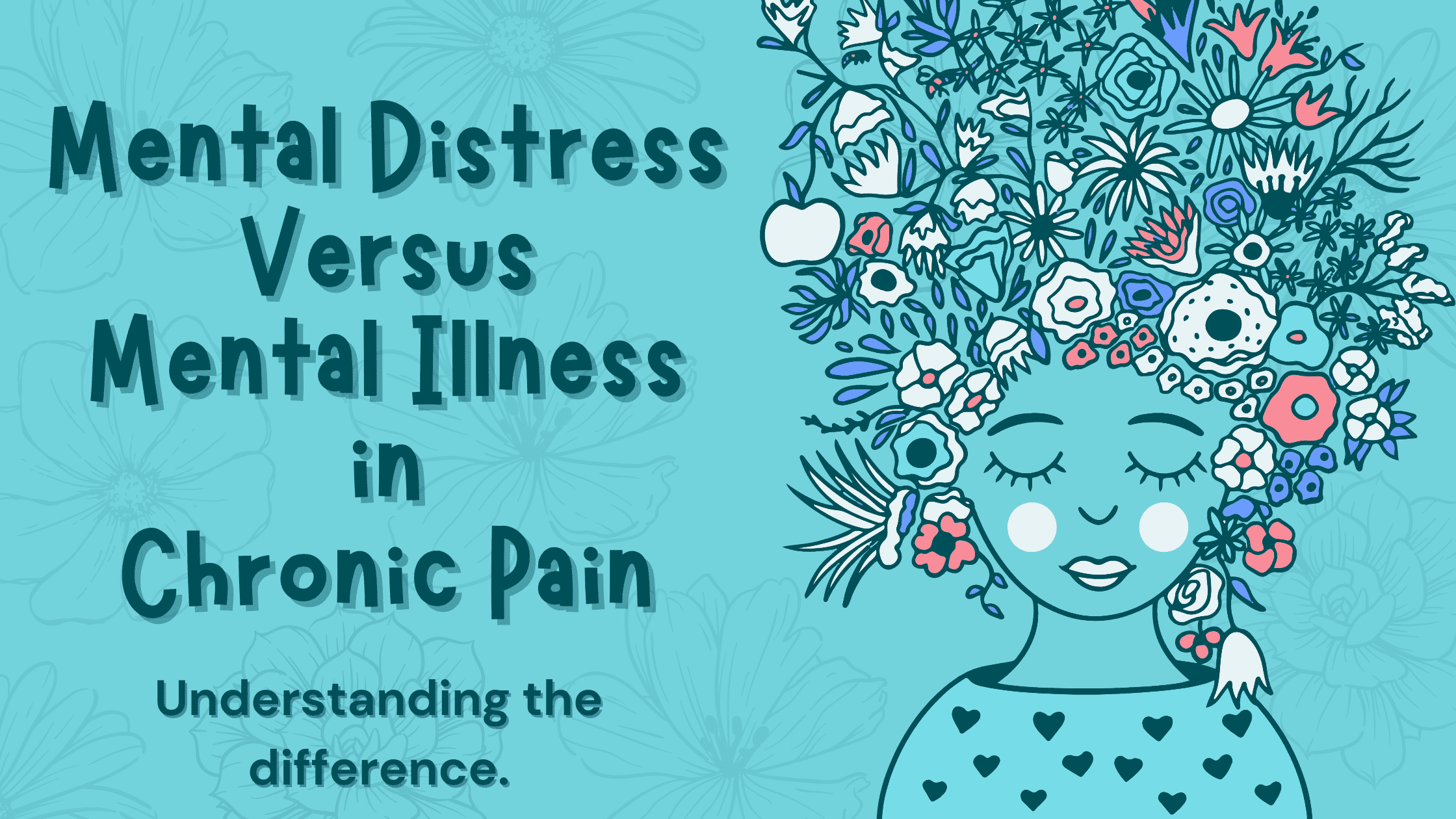The experience of pain is universal and highly subjective. Regardless of race, ethnicity, and gender, we share the same nociceptors and nervous system that detect and carry sensory information to our brain; the same structures process and turn it into consciousness. However, there is large individual variation in pain, and the study of pain in humans is a complex endeavor. Some of this variation has a genetic basis: mutations in DNA sequences encoding various ion channels, for instance, are associated with increased or decreased pain sensitivity in relation to a number of conditions and diseases (1). While little is known about the extent of pain heritability, studies comparing identical and fraternal twins suggested that genetic factors account for 22% to 60% of the variance in pain sensitivity to specific noxious stimuli (2, 3).
As for the rest, it is now clear that the perception and response to pain depends on much more than our genetic makeup: past pain experiences, spiritual beliefs, mental health, social interactions, self-esteem, even the mood we happen to be in when pain strikes, all affect our pain experience.
There are also ethnic differences in the pain experience (4); for instance, research has shown that:
- Eastern cultures are more likely to be introspective and to refrain from expressing pain, either verbally or demonstratively, while Western cultures are highly verbal and express the want to eliminate pain as quickly as possible (5).
- Ethnic differences influence the severity of pain associated with several medical conditions, including AIDS, glaucoma, and arthritis (6).
A recent study in the Journal of Pain indicates that cultural factors may explain some puzzling observations about Hispanic Americans (HAs) and pain.
A recent study in the Journal of Pain indicates that cultural factors may explain some puzzling observations about Hispanic Americans (HAs) and pain. Click To TweetLatino Pain Paradox: More Pain Sensitivity, Fewer Reported Pain Conditions
People of Hispanic origin are one of the fastest growing demographic groups in the U.S, representing 17.8 % of the nation’s total population in 2017 (~59 million people). However, little is known about this demographic’s pain experience and the potential disparities that exist in pain treatment pertaining to this group. Recent research, directed by Adam T. Hirsh, Ph.D. at the Department of Psychology of Indiana University and Purdue University Indianapolis, critically reviewed and analyzed more than 100 studies on pain experience and pain management among HAs, with a focus on non-malignant pain, pain behaviors, and pain treatment seeking. The conclusions highlight important psychosocial differences in how Hispanic Americans perceive and respond to pain, compared with the other two main racial groups in the US (whites and African Americans) (7).

Pain sensitivity
Experimental tests on pain threshold and tolerance showed that Hispanic Americans, like African Americans, report greater pain sensitivity and less pain tolerance to heat, cold and ischemic pain stimuli than non-Hispanic whites (NHWs). Interestingly, this difference appears to be especially true for Hispanic Americans who strongly identify with their Hispanic ethnicity (8). A correlate of increased pain sensitivity in HAs versus NHWs can be found in national surveys, in which HAs report more severe chronic pain, chronic joint pain, and average chronic pain over the past week, as well as fewer pain free days. In some clinical investigations, HAs report more severe chronic pain, acute postoperative pain, and acute fracture pain (7).
Pain Prevalence
Several surveys show that HAs report fewer pain conditions such as acute and chronic back pain, temporomandibular joint and muscle disorder-type pain, lower and upper extremity pain, and arthritis (7). An analysis of the 2003–2004 National Health and Nutrition Examination Survey data shows that HA and Mexican American men and women reported significantly less chronic widespread and regional pain than both NHW men and women, respectively. In contrast, reported acute pain rates were similar among women but higher in HA and MA males, compared to NHW males (9).
The perception and response to pain depends on much more than our genetic makeup Click To TweetSociety and Culture Shape the Hispanic Pain Experience
While future genetic studies may unmask distinct “molecular signatures” related to pain sensitivity and prevalence in HAs and other ethnic groups, substantial evidence points to social and cultural factors as key determinants of the pain experience of Hispanics in the US.
These factors include:
- Acculturation. HAs with high acculturation (the process of adopting the behaviors, beliefs, and cultural elements of the dominant group in a society) tend to engage more frequently in poor health behaviors (e.g., smoking, poor nutrition, excessive drinking, and drug use) than non or low acculturated HAs. They also tend to report more pain and psychological distress than NHWs (10, 11). Important to note, higher cross-cultural assimilation is correlated with having health insurance and increased healthcare access (7). In contrast, low acculturation in HAs is associated with lack of fluency in English and perceived discrimination by medical providers, both of which constitute barriers to seeking treatment for pain (12).
- Health services barriers, legal status, and working conditions. The latest federal government survey (2018) for adults aged 18–64 indicated that 24.2% of HAs were uninsured, compared with 14.1% of non-Hispanic African Americans, 8.9% of NHWs, and 6.4% of non-Hispanic Asians. Meanwhile, over 6 million working Hispanic immigrants lack the legal documentation required to have access to medical and health services (13). The most common occupations among HAs include farm work, construction, and services, i.e activities where physical demand is high, and the risk for developing pain from occupational exposure is greater. In many cases, these occupations have rigid schedules and do not offer paid sick-leave or employer-based health insurance. Arguably, all these factors contribute to why pain conditions are reported by HAs much less frequently.
- Treatment preferences and pain coping strategies. HAs are more reluctant to take strong pain medications such as opioids (out of fear of tolerance and addiction), and many believe that pain should be overcome with natural or non-prescription medicines. Stoicism (the endurance of pain or hardship without the display of feelings and without complaint) and religious manifestations (e.g. prayer) are also common coping strategies for pain care (7). Of concern, the consequences of keeping pain conditions untreated are higher rates of disability among HAs in the long term.
Breaking Barriers: Better Pain Care for Hispanics in the US
Dr. Hirsch’s analysis demonstrates that “Hispanic culture affects the pain experience at both the social and biological/nociceptive processing level”. While genetic variation might explain some differences in pain sensitivity across multi-ethnic clinical samples, the attitudes, behaviors, and beliefs influenced by cultural values also have a considerable impact.

Improved access to healthcare; mitigation of occupational risks for the Hispanic workforce; promotion of health and wellness activities and educational programs aimed at the Hispanic community; increasing awareness in health professionals about how culture influences health beliefs and decision-making in HAs; and increased availability of trained Spanish speaking interpreters in clinical settings utilized by HA patients, will be sensible steps towards reducing disparities in the incidence and treatment of pain conditions affecting this large fraction of the American population.
We’d love to hear what health professionals and our Hispanic readers have to say. Please leave a comment below, and visit us on Facebook!
Cómo la Cultura Moldea la Experiencia del Dolor en los Hispanoamericanos
La experiencia del dolor es universal, y muy subjetiva. Sin importar género, raza, o etnia, usamos los mismos nociceptores y tractos nerviosos para detectar y transmitir la sensación de dolor hacia nuestros cerebros; una vez allí, usamos las mismas estructuras para decodificarlo, procesarlo, y convertirlo en experiencia consciente. Hay, sin embargo, una gran variación individual en el dolor, y el estudio del mismo es una tarea compleja. Parte de esta variación tiene bases genéticas: mutaciones en secuencias de DNA que codifican diversos canales iónicos, por ejemplo, están asociadas con mayor o menor sensibilidad al dolor dentro de varias enfermedades y condiciones médicas (1). Aunque sabemos poco aún cuán heredable es el dolor, estudios en gemelos idénticos y fraternos sugieren que los factores genéticos dan cuenta de un 22% a 60% de la variancia en la sensibilidad a estímulos dolorosos específicos (2, 3).
Al presente, es claro que la parte restante de nuestra percepción y respuesta al dolor depende no sólo de nuestro acervo genético: experiencias previas, creencias espirituales, salud mental, interacciones sociales, autoestima, incluso el estado de ánimo en que nos encontramos cuando nos aflige el dolor, todo esto afecta la manera en que experimentamos dolor.
Existen además interesantes diferencias étnicas en la experiencia del dolor (4); por ejemplo, ciertas investigaciones han mostrado que:
- Las culturas Orientales son más propensas a la introspección y a tienden a abstenerse de expresar dolor, en forma verbal o demostrativa, mientras que las culturas Occidentales tienden a verbalizar mucho más las sensaciones dolorosas y procuran eliminarlas cuanto antes (5).
- Las diferencias étnicas influencian la severidad del dolor asociado con diversas condiciones médicas, entre estas el SIDA, el glaucoma, y la artritis (6).
Un estudio reciente en el Journal of Pain indica que ciertos factores culturales podrían explicar algunas observaciones intrigantes sobre los Hispanoamericanos (HAs) y el dolor.
La Paradoja Latina del Dolor: Más Sensibilidad al Dolor, Menos Consultas Médicas
La gente de ascendencia hispana constituye uno de los grupos demográficos de más rápido crecimiento en los Estados Unidos, conformando en el 2017 un 17.8 % de la población total (~59 millones). Sin embargo, en comparación con otras minorías raciales o étnicas. se sabe poco sobre la experiencia de los HAs con respecto al dolor -y las potenciales disparidades respecto de su tratamiento-. Una investigación reciente, dirigida por el Dr. Adam T. Hirsh, del Departmento de Psicología, Indiana University – Purdue University Indianapolis, analiza críticamente más de 100 estudios sobre la experiencia y el manejo del dolor por parte de HAs, enfocándose en el dolor benigno (no oncológico), los comportamientos relacionados con su manejo, y la disposición a buscar ayuda terapéutica. Las conclusiones revelan importantes diferencias en la manera en que los HAs perciben y responden al dolor, en comparación con los otros dos grupos raciales principales en los Estados Unidos, es decir, blancos no hispanos (BNHs) y afroamericanos (AAs) (7).
Sensibilidad al Dolor. Ensayos sobre el umbral y la tolerancia al dolor muestran que al igual que los AAs, los HAs reportan mayor sensibilidad y menor tolerancia a estímulos dolorosos calientes, fríos, e isquémicos, que los BNHs. Curiosamente, esta diferencia es muy aparente en los HAs que se identifican fuertemente con su etnicidad hispana (8). Las encuestas nacionales reflejan estos hallazgos: los HAs declaran mayor intensidad en el dolor crónico general, el dolor crónico articular, y el dolor crónico promedio durante la última semana, así como un número menor de días sin dolor, mientras que en algunas investigaciones clínicas los HAs reportan mayor severidad en el dolor crónico, agudo postoperatorio, y agudo postfractura (7).
Prevalencia del Dolor. Sin embargo, diversas encuestas indican que los HAs reportan un número menor de condiciones asociadas al dolor, como dolor de espalda agudo o crónico, dolor relacionado con trastornos de los músculos y la articulación temporomandibular, dolor de extremidades inferiores y superiores, y artritis (7). Un análisis de los datos de la Encuesta de Examinación Nacional de Salud y Nutrición de 2003–2004 indica que hombres y mujeres HAs y mexico- americanos (MAs)padecen significativamente menos dolor crónico generalizado y regional que hombres y mujeres BNHs, respectivamente. Por el contrario, los reportes de dolor agudo fueron similares entre mujeres, pero mayores en hombres HAs and MAs que en varones BNHs (9).
Dr. Tatta’s simple and effective pain assessment tools. Quickly and easily assess pain so you can develop actionable solutions in less time.
Sociedad y Cultura Moldean la Experiencia del Dolor en los Hispanoamericanos
Aunque los estudios genéticos pueden llegar a desenmascarar “firmas moleculares” distintivas relacionadas a la sensibilidad y la prevalencia al dolor en HAs y otros grupos étnicos, existe evidencia substancial que apunta a factores sociales y culturales como determinantes clave de la experiencia del dolor de los hispanos que viven en los Estados Unidos.
Entre estos factores se incluye:
- La asimilación cultural. Interesantemente, HAs con alta asimilación cultural (el proceso de adoptar conductas, creencias, y elementos culturales del grupo social dominante) tienden a presentar con mayor frecuencia hábitos de salud nocivos (como fumar tabaco, comer mal, beber en exceso, o usar drogas recreacionales) que HAs sin, o con baja asimilación cultural. Los primeros tienden además a reportar mayor dolor y malestar psicológico que los BNHs (10, 11). Es de destacar aquí, que una mayor asimilación intercultural se correlaciona con poseer seguro de salud y un mayor acceso al sistema público de salud (7). Por el contrario, una asimilación baja in HAs se asocia con la nula o baja fluidez en el idioma inglés, y con la percepción de discriminación de parte de profesionales médicos, factores ambos que representan barreras al momento de buscar tratamiento para el dolor (12).
- Barreras de salud, situación legal, y condiciones de trabajo. La encuesta gubernamental más reciente (2018) sobre adultos entre 18–64 años de edad iindica que un 24.2% de HAs no poseen seguro de salud, comparado con 14.1% de AAs no-hispanos, 8.9% de BNHs, y 6.4% de asiáticos no-hispanos. Por otro lado, más de 6 millones de inmigrantes hispanos con empleo carecen de documentación legal requerida para acceder a servicios médicos y de salud (13). Las ocupaciones más comunes entre los HAs incluyen la agricultura, la construcción, y el área de servicios, es decir actividades en donde la demanda física es alta, y el riesgo de desarrollar condiciones dolorosas es más elevado. Muchas veces, estas ocupaciones tienen horarios rígidos, y no ofrecen licencia por enfermedad remunerada o seguro de salud. Evidentemente, todos estos factores colaboran que los HAs reporten condiciones asociadas al dolor con menor frecuencia.
- Preferencias de tratamiento y estrategias para afrontar el dolor. Los HAs son más renuentes a tomar analgésicos fuertes como los opioides (por miedo a la tolerancia y la adicción), y muchos creen que el dolor debe ser superado con remedios naturales o analgésicos comunes. El estoicismo (el acto de soportar el dolor o las dificultades sin demostrar sentimientos ni quejas) y las manifestaciones religiosas (como las plegarias) son además estrategias comunes de confrontar el dolor en los HAs (7). Lamentablemente, las consecuencias de no tratar apropiadamente las condiciones médicas asociadas con dolor son, a largo plazo, un índice mayor de discapacidad entre los HAs.
Derrumbando Barreras para una Mejor Atención del Dolor en Hispanoamericanos
El análisis del Dr. Hirsh y su equipo demuestra que la “cultura hispánica afecta la experiencia del dolor tanto a nivel social como biológico/nociceptivo”. Aunque la variación genética podría explicar algunas de las diferencias en la sensibilidad al dolor en muestras clínicas multiétnicas, las actitudes, conductas, y creencias influenciadas por valores culturales tienen asimismo un impacto de consideración.
Mejorar el acceso a la salud, mitigar los riesgos ocupacionales de la fuerza de trabajo hispana, promover actividades y programas educativos en torno a la salud y el bienestar dirigidos a la comunidad hispana, concientizar a los trabajadores de la salud sobre las diferencias culturales presentes en la misma, e incrementar la disponibilidad de intérpretes hispanoparlantes en los establecimientos clínicos a los que asisten pacientes HAs, son algunas de las medidas posibles para reducir las disparidades en la incidencia y el tratamiento de enfermedades y condiciones médicas signadas por el dolor en esta importante franja de la población estadounidense.
Nos gustaría mucho conocer la opinión de profesionales de la salud y de nuestros lectores hispanos sobre la experiencia Latina en torno al dolor. Aguardamos su comentario aquí abajo, y los invitamos a visitarnos en nuestra página de Facebook!
REFERENCES:
1- James, S. (2013). Human pain and genetics: some basics. British journal of pain, 7(4), 171-178.
2- Norbury, T. A., MacGregor, A. J., Urwin, J., Spector, T. D., & McMahon, S. B. (2007). Heritability of responses to painful stimuli in women: a classical twin study. Brain, 130(11), 3041-3049.
3- Nielsen, C. S., Stubhaug, A., Price, D. D., Vassend, O., Czajkowski, N., & Harris, J. R. (2008). Individual differences in pain sensitivity: genetic and environmental contributions. Pain, 136(1-2), 21-29.
4- Rahim-Williams, B., Riley III, J. L., Williams, A. K., & Fillingim, R. B. (2012). A quantitative review of ethnic group differences in experimental pain response: do biology, psychology, and culture matter?. Pain Medicine, 13(4), 522-540.
5- Callister, L. C. (2003). Cultural influences on pain perceptions and behaviors. Home Health Care Management & Practice, 15(3), 207-211.
6- Portenoy, R. K., Ugarte, C., Fuller, I., & Haas, G. (2004). Population-based survey of pain in the United States: differences among white, African American, and Hispanic subjects. The Journal of Pain, 5(6), 317-328.
7- Hollingshead, N. A., Ashburn-Nardo, L., Stewart, J. C., & Hirsh, A. T. (2016). The pain experience of Hispanic Americans: a critical literature review and conceptual model. The Journal of Pain, 17(5), 513-528.
8- Rahim-Williams, F. B., Riley III, J. L., Herrera, D., Campbell, C. M., Hastie, B. A., & Fillingim, R. B. (2007). Ethnic identity predicts experimental pain sensitivity in African Americans and Hispanics. Pain, 129(1-2), 177-184.
9- Riskowski, J. L. (2014). Associations of socioeconomic position and pain prevalence in the United States: findings from the National Health and Nutrition Examination Survey. Pain Medicine, 15(9), 1508-1521.
10- Bui, Q., Doescher, M., Takeuchi, D., & Taylor, V. (2011). Immigration, acculturation and chronic back and neck problems among Latino-Americans. Journal of immigrant and minority health, 13(2), 194-201.
11- Aguerrevere, L. E., Castillo, Y. A., Nicks, R. C., Juan, R., & Curtis, K. L. (2016). Pain-related symptom reporting among Hispanics: implications for forensic psychological evaluations. Psychological injury and law, 9(4), 341-359.
12- Anderson, K. O., Green, C. R., & Payne, R. (2009). Racial and ethnic disparities in pain: causes and consequences of unequal care. The Journal of Pain, 10(12), 1187-1204.
13- Krogstad, J.M, & Lopez, M.H (2014). Hispanic immigrants more likely to lack health insurance than U.S.-born. Washington, DC: Pew Hispanic Center.



